
Millenary East: a tour of the imperial cities of Morocco
The cities of the ancient kingdom of the African continent are owners of great stories, adobe palaces, infinite markets and unique treasures. Here the tour to discover them
Article originally published in: Infobae
Rabat. Breeze and history, on the banks of the Bou Regreg River. The capital of the Kingdom of Morocco, a mixture of the historical tradition of the past and the modernity of the present, beats between the sea and the river. Two nights will be enough to tour the main points of interest and also enjoy a walk, in the typical blue barges, along the famous river.
The Hassan Tower, one of the icons of the Moroccan capital, would have been the second largest mosque of its time, had it not been for the death of the Sultan who ordered it to be erected. The minaret tower was designed to reach 60 meters, but only reached 44 when the works were stopped due to his death. To this was added the earthquake of 1755 that damaged the minaret. Centuries later, in 2013, restoration work began, for more than 140 million euros. Today it is one of the most visited public spaces by tourists and Moroccans.
Walking through the esplanade of the mosque, is the Mausoleum of Mohamed V, where the remains of the former king and his two sons rest. Arabic-Andalusian style, it was made by a Vietnamese architect, in the 60s. The white marble building and green tiles, is guarded by the royal guard. Once inside, you can see the tombs accompanied by an Imam, who recites, permanently, the verses of the Koran, next to one of the royal sarcophagi.
Of all the imperial cities, Rabat is the only one that has a grid built medina. Towards the interior of its centuries-old walls, there are the characteristic shops and Moroccan trading posts, in addition to the Grande Mosquee, an architectural treasure, which non-Muslims can only appreciate from the outside.
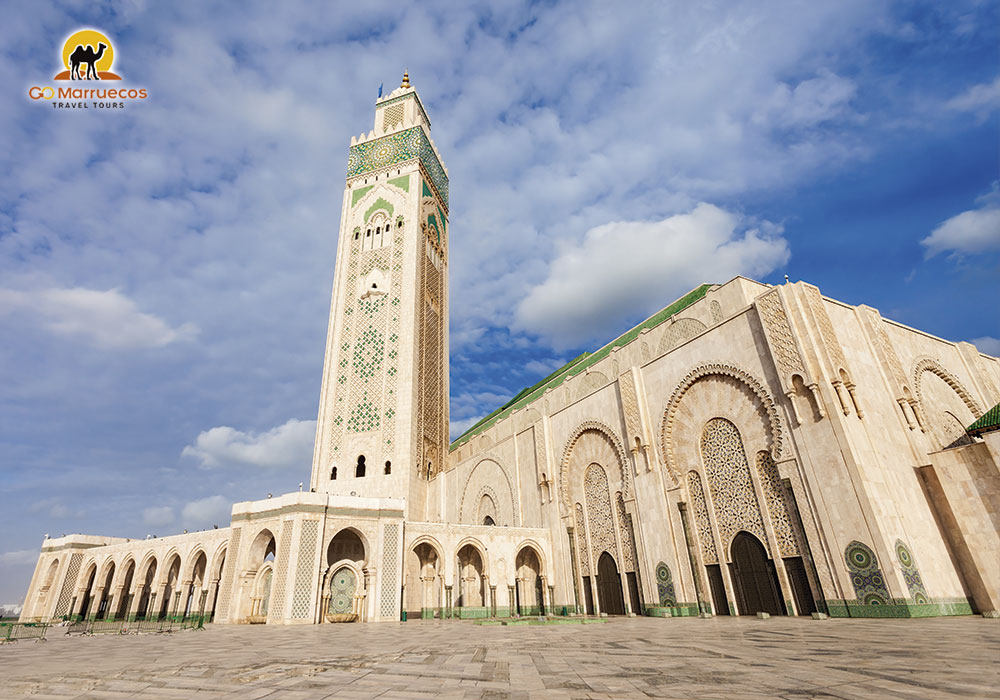
The day can end by having a rich peppermint tea in the cafe inside the Jardines de los Udayas, an Andalusian-style garden, which hides behind walled walls, full of lemon trees, which permeate the atmosphere of orange blossoms.
Marrakech Founded a thousand years ago by the first emir of the Berber dynasty, Youssef Ibn Tachfin. It is one of the most important cities in the kingdom and was also the capital of the Islamic Empire and the Saadis. The largest traditional market in the country and one of the busiest squares in Africa and around the world is in this imperial city, as enchanting by day as by night. The red city, as it is called, due to its low buildings of reddish earth, is the favorite of world tourism and chosen by artists, intellectuals and adventurers.
To know it, it will take more than a couple of days, a good guide in Spanish and visit it away from the summer months. The tour can start anywhere in the city, but Plaza Yamaa el Fna can be a good start. With the fall of the sun, this historic site, where they say the heads of executed prisoners used to be displayed, begins to fill with hundreds of people until they become a large multicolored mass. Storytellers, snake charmers, dancers, musicians, fruit juice vendors, acrobats, writers. The diversity of activities and curious people who gather there are endless, as are the colors, aromas and flavors that overflow the square and its narrow streets.

Less than 200 meters away is the Koutoubia Mosque, the largest in the city, and it represents a masterpiece of the architecture of the time. Its minaret is the oldest in the region and measures 65 meters. It is easy to see since no construction exceeds it. Five times a day, this and all the minarets of the Moroccan cities are in charge of calling the practitioners of the Muslim religion to prayer.
Advancing a few blocks, are the Saadies Tombs, which were rediscovered in 1917 when the French made an aerial study for the creation of maps of the city, today one of the main attractions of Marrakesh. The mausoleum comprises the remains of some sixty members of the Saadí dynasty, among which are those of Ahmad al-Mansur and his family. Its architecture and aesthetics are considered unique within the main monuments and buildings of the city.
The Majorelle Garden deserves a separate chapter. The painter Jaques Majorelle buys this palm grove in 1922 where he builds an Art Deco villa, with a first floor as his personal home and on the ground floor, his art workshop. In love with botany, he creates an immense garden with various species, including cacti, yucas, water lilies, jasmine, coconut palms, palm trees and banana trees. In 37 he created the Majorelle blue color, with which he painted his residence and then the whole garden to open it to the public.
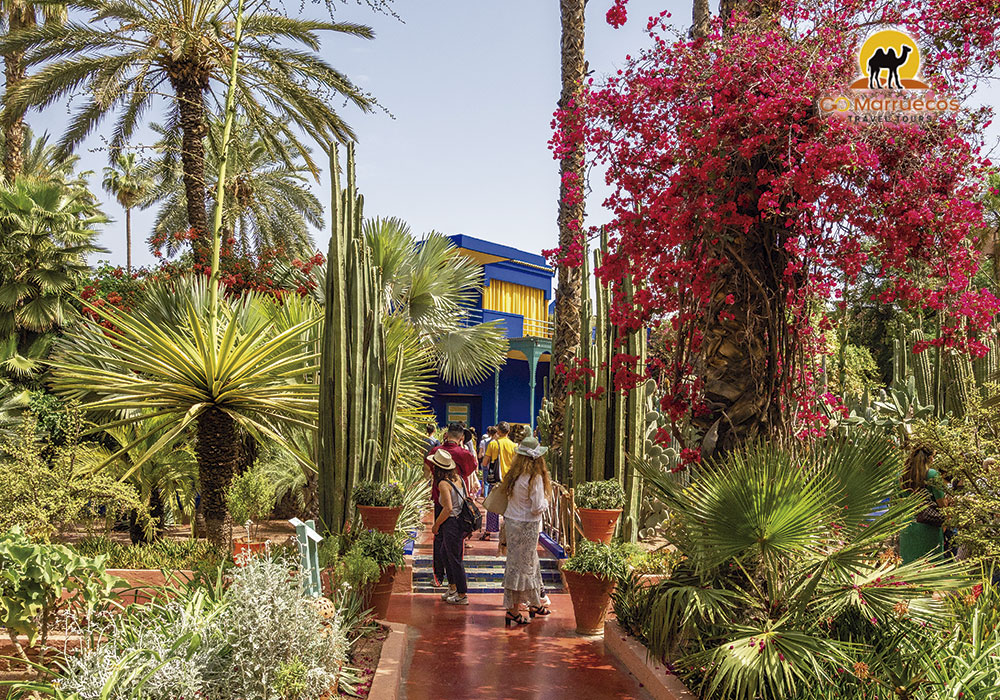
Twenty years later, Ives Saint Laurent and his partner buy this abandoned lot, put it in value and transform the workshop in the Berber Museum. Today, visitors line up for hours to visit this magical place, which keeps the stories and memories of famous artists and designers. Admission costs 60 dirhams that are worth paying.
The Bahia Palace is another of the unmissable works of architecture of the late nineteenth century, which has become the greatest of all time. The real building is completely empty and there are multiple versions that circulate about where all the interior decoration and furnishings went. The truth is that still the paintings and designs on walls and ceilings remain intact and to explore it fascinates by its enormous gardens, the harem and the rooms of the concubines with the typical central patio and its fountain.
To understand Morocco it is essential to know the largest Muslim school in the kingdom, the Madrasa (school) Ben Youssef - 14th century. It costs only 6 euros to know and summarize the feeling and thinking of the Koranic culture and its influence on the history of this country. It impacts the central courtyard, surrounded by arches and walls inlaid with tile and walls covered with panels of zellige, cedar, stucco and marble. It has the capacity to house 900 students. And in 2020 they will begin a series of spare parts that will reduce the hours of access to the public. Highly recommended to go with a guide.

The old part of the city houses, in addition to the Yamaa el Fna square, the old medina, a UNESCO World Heritage Site. The markets, which offer all kinds of handicrafts, clothing, pots, tajines, slippers (shoes), leathers and silver jewelery with natural stones, make the visitor get lost among its alleyways, trapped as in a trance, by the hustle and bustle of aromas and colors, which palpitate in the dense air of these giants of local commerce. Impossible not to buy: it will succumb.
Fez. The oldest of the four dates back to the eighth century. It is famous for its walled city, compared to the old city of Jerusalem. The oldest university in the world is located here: Al Qarawiyyin - also called Al-Karaouine or Al-Quaraouiyine - founded in 859 and considered by Unesco and the Guinness Book of Records as the oldest academy still in operation.
Fes is the cultural and spiritual capital of Morocco. Its narrow, labyrinthine and chaotic streets, traveled by mules, motorcycles and people from all over the globe, transfer the visitor to unknown dimensions. That ancient story climate is felt when entering Fez el-Bali, the largest medina in the Islamic world, born in the eighth century. There, the butchers show in the streets the slaughtered hens, hung from the hooks or the pieces of freshly skinned lamb, between stalls of vegetables, fruits, carpets, lamps, tunics and sculptures in ceramics or wood.
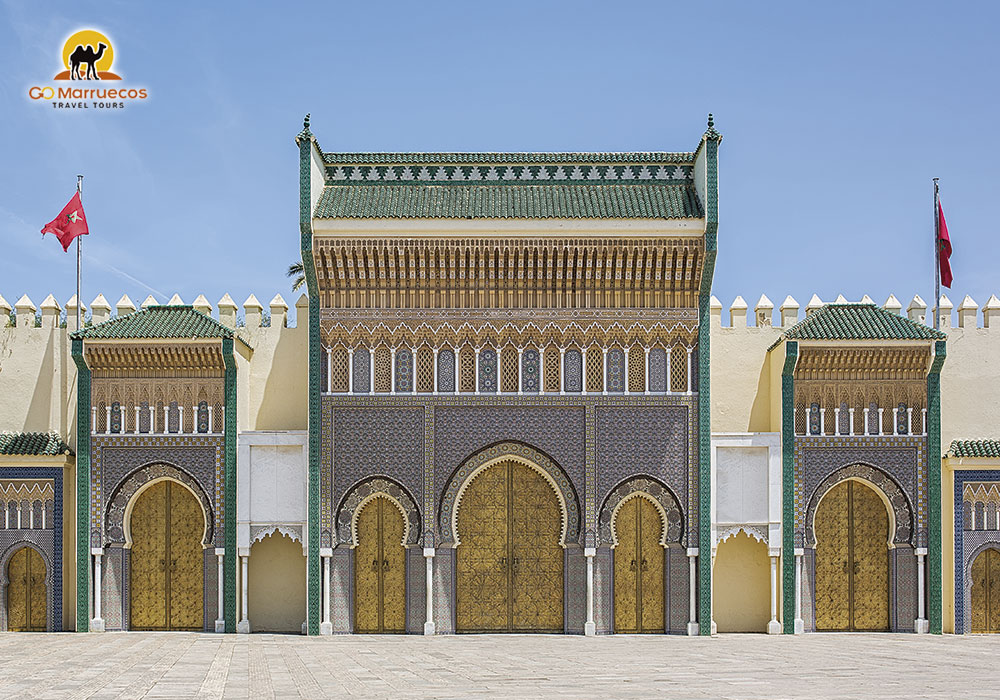
And it is in this medina where you can visit the famous tannery of Chouwara. For a thousand years, they introduce the skins into huge vats, full of lime and pigeon droppings, where they are left at rest for several days. So tan, dye and dry the skins.
The smell is frightening and usually takes over the entire area surrounding the tannery, especially on hot days. Anyway, we must see this millenary show yes or yes. A sprig with mint leaves on the nose can do everything. And you get it free when you enter the tannery.
On the other hand, the city offers many other tourist attractions such as the Nejjarine fountain, the Moulay Idriss Mausoleum and the Karaouine Mosque. Something to highlight is the food: in any of the imperial cities it is highly recommended to try the local cuisine. The best restaurants and bars in Fez are in the Medina Fez el-Bali.
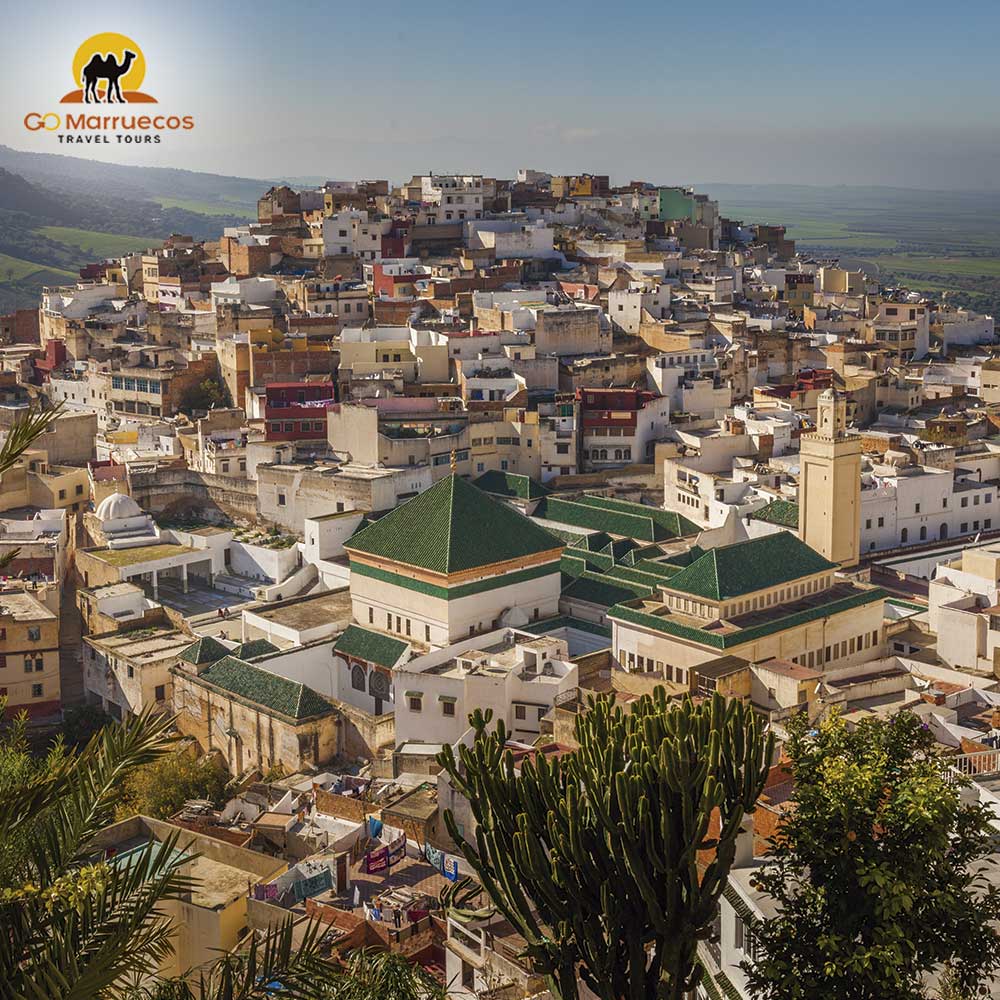
Around Bab Boujeloud or Puerta Azul there are some restaurants where you can discover Moroccan dishes such as Tajín, a stew of meat and vegetables, made in a clay bowl, Cous Cous or various soups that are part of traditional cuisine. For those who do not dare, in the Ville Nouvelle - the modern area of the city - there are a variety of places that offer international cuisine. In one of its main avenues, Av. Hassan II, you can find cinemas, cafes, restaurants, terraces, ice cream parlors and very good patisseries, this area being the favorite of the locals to enjoy a mint or coffee tea in the middle of the afternoon.
Meknes 138 km east of Rabat and 60 km west of Fez is the least tourist of the imperial cities of the kingdom, declared in 1996 World Heritage Site. Known as the City of One Hundred Minarets (or minarets), for its number of mosques, Meknés is one of the places where Islamism is lived with greater force. As nowhere else in the country, the voices of the almucines are part of the orchestra of sounds that make up the daily scene. The call to prayer, from the minarets, is the hallmark of this peaceful city.
In addition to getting lost in the medina and haggling in the suqs or markets, much quieter than those in Fez or Marrakesh, the tourist will find some points of interest that will not take more than one day to travel. Among the most prominent are: the Dar Jamai Museum, a palace from the year 1882, with its beautiful Andalusian courtyard and the Madrasa Bou Inania, dating from 1332, the former academy of Islam.
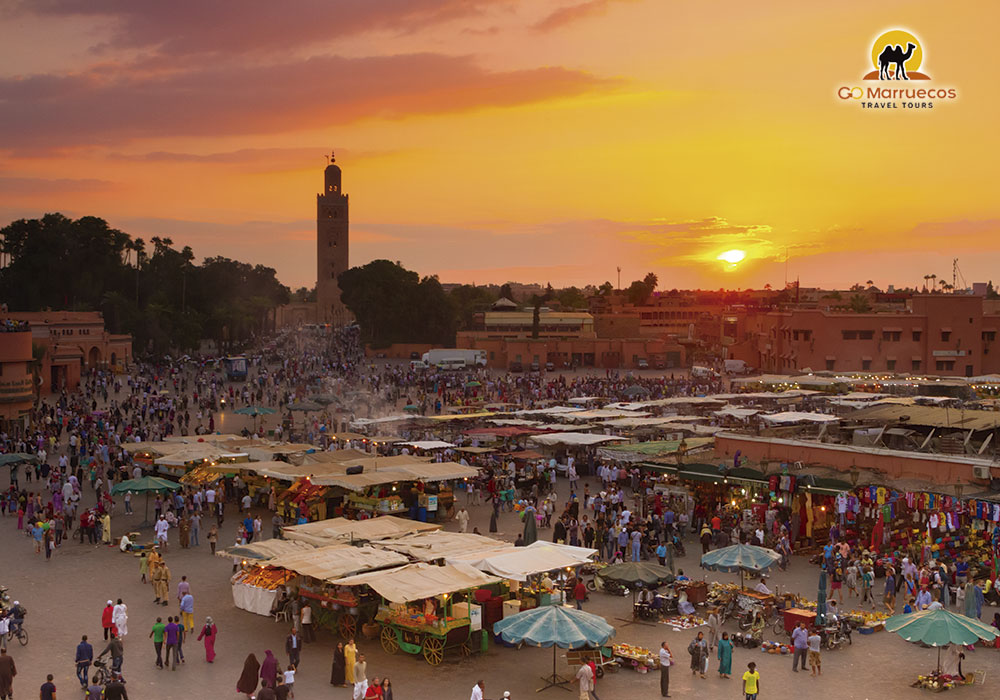
Don't miss visiting the Mulay Ismail Mausoleum, the most feared sultan in Morocco. Mulay Isamil was the only emperor who managed to push back the Turks with his great army. According to the popular story, the Sultan had more than 800 children with 500 wives and concubines. If they were born female, he ordered them to kill instantly as well as many of his slaves, who killed them "by hobby." Most of the monuments that exist today are owed to this dreaded king who in the seventeenth century ordered the transfer of the capital of his kingdom to Meknes.
The souvenir photo must be taken at the main entrance door of the medina. Bab-el-Mansour is one of the most beautiful doors the kingdom has and was built by order of the famous Ismail. They say that when the architect finished the work, the sultan asked him if he could do better. The architect answered yes, and then the king ordered him to execute it.
Article originally published in: Infobae
